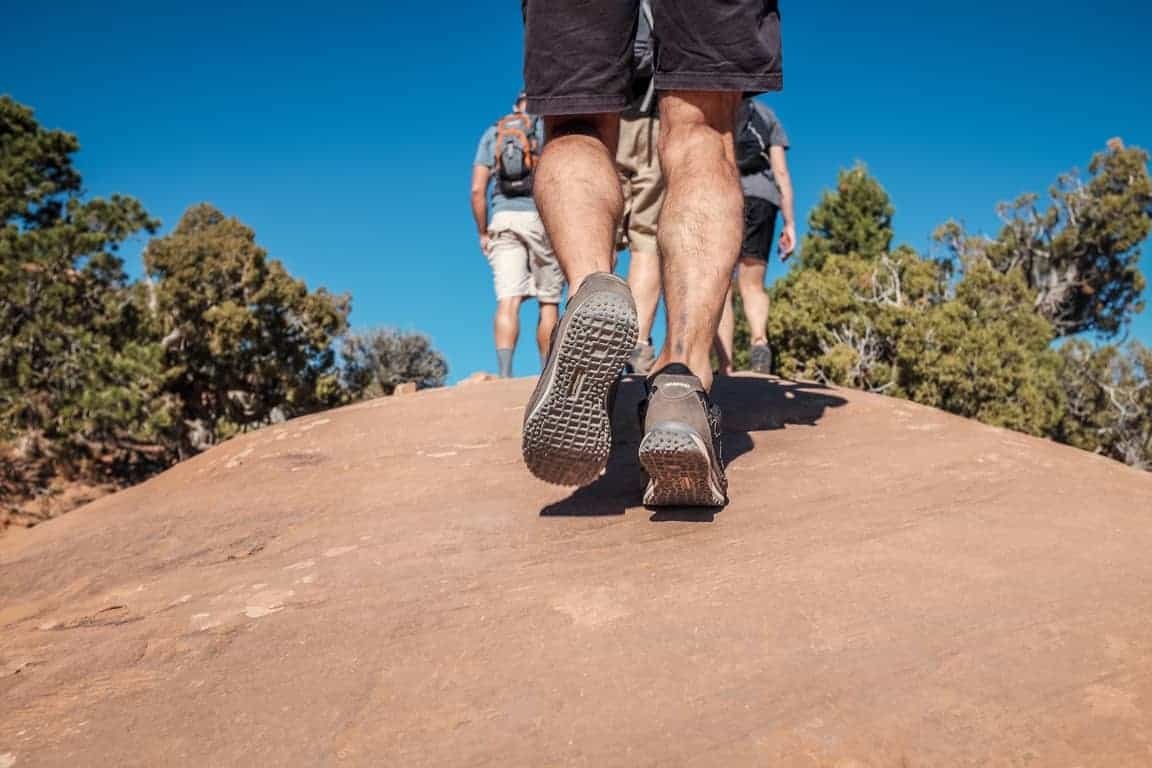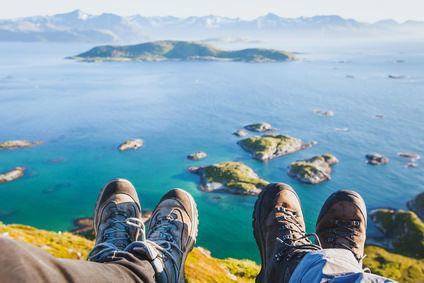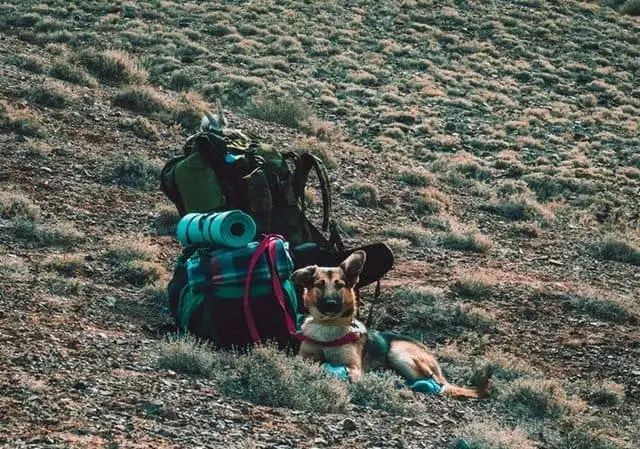Is there anything like being in the great outdoors? If you are reading this, you must be a fan and whether you only hike well-known trails around the city or you are seriously into backpacking into the high country, the fact is that, sooner or later, you or one of your companions will most likely sustain an injury.
As careful as most of us try to be, accidents happen, and some accidents, such as moose or cougar encounters, are completely unpredictable.
Worse still, you are a hiking fan like me, and you watched the movie 127 Hours. I tried to note every possible way this could have been avoided or wondered what other options this young man might have had. I watch movies such as this and constantly think “What would I have done in his situation and how could I have avoided it, to begin with.”
While hindsight is always 2023, basic safety measures should always be followed, and they should never become so routine that our adherence to them becomes lax.
Let’s take a quick look at those basic safety rules.

Image Source: pxhere.com
Basic Safety Rules for Hikers
You may be tempted to skip over this part since you’re an experienced hiker with years of experience.
Don’t forget, so was Aron Ralston. (If you are not familiar with his story, look him up)
Minimize your risk by always following the basic safety measures of hiking:
1. If you are hiking in a state or national park, consult with a park ranger about conditions and current problems.
2. Don’t hike alone (although I know many do, it is far better if you can bring a friend).
3. Create a basic itinerary and share it with others, such as family members, friends who will be home while you are hiking, etc. Even something as bare as “Hiking the Hilltop trail on Sunday. Should be home by Sunday evening at 7 PM” This gives searchers a place to start if you don’t return home. This is especially vital if you are hiking alone.
4. Make an emergency plan and discuss it with your hiking partner.
5. Bring some type of personal locator beacon, or satellite messaging service, or consider investing in a satellite phone. If you have none of these, try to borrow one. You can bring your cell phone but remember that it may not work.
6. Prepare for bad or hot weather. Pack an emergency blanket, more water than you think you need, and be educated on where to hide during thunderstorms.
7. Pack a first aid kit that includes at least 1 day’s supply of ready-to-eat food, water, matches, sunscreen, map, compass, flashlight, and basic medical supplies.

More about that First Aid Kit
I’ve seen my share of hikers seeking basic first aid items on a trail because no one on their team carried one.
Weight matters, yes, but so does your health. If one person finds the kit burdensome, then split it up between several members.
A first aid kit should have basic items such as elastic wrap bandages, adhesive bandages, antiseptic (even hand sanitizer will do) and if you are allergic to bee stings or if you take insulin, do not leave your medication in the car! Take at least one day’s supply of inhalers, insulin, EpiPen, or other necessary items.
I also suggest taking a small bottle of over-the-counter antihistamines, such as Zyrtec or Benadryl. You never know when you will run into something you never knew you were allergic to!
Common Trail Injuries
It’s time to talk turkey about common injuries that can happen to the most experienced hiker. Be prepared in case you or someone in your party ends up a victim of the following more common than you think hiking injuries.
1. Blisters
Everyone gets a blister at one time or another. Do your best to wear good hiking shoes that fit properly and moisture-wicking socks. I’ve gone so far as to spray my feet with deodorant/antiperspirant to help control moisture.
Blisters are best treated by simply washing with soap and water or you can use a hand sanitizer if that’s all you have. A Band-Aid or two (if you have some padding, such as a cotton ball or even a bit of gauze) to relieve pressure, you should be OK until you get home.
2. Sprains
A simple hiking fact is that twisted ankles happen. As much as you don’t want to, you are going to have to turn back.
A very minor sprain might allow the hiker to walk back out with the help of a handy walking stick to lean on. In more serious cases, the injured party can be helped to the car by a few good friends to take turns supporting their weight as they hop along on one leg.
Do not remove your shoe. This will allow the swelling to increase dramatically. Wrap the ankle in an elastic bandage to reduce swelling and head back to civilization.
3. Deep Cuts

If someone in your party gets a deep or serious cut or wound, you can treat it with the items in a basic first aid kit as a good start, but a serious wound might require medical attention.
Stop bleeding by putting pressure on the wound. Disinfect the area and wrap it in an elastic bandage.
If you can’t stop the bleeding and you are far from a ranger station or your car, try contacting 911 or the local ranger station. Walking might increase bleeding. With continued pressure, most bleeding can be stopped within 30 minutes.
4. Broken Bones
These are not only intensely painful injuries, but a broken bone will need to be set by a medical professional.
Make a splint to minimize pain and check for any open wounds. If the hiker can walk, slowly head back down to the car or ranger station.
If the hiker cannot walk, you will need to have someone go back to the car or ranger station and have emergency services come to you.
If you can call for assistance, do so as soon as the injured person is stable.
5. Allergic Reactions/Rashes/Hives
Allergic reactions are, often, a minor annoyance. I discovered that I break out in an itchy rash if I should even see a stinging nettle plant.
I’ve learned to always take an antihistamine with me for these minor annoyances.
The same is true with rashes or hives. A bit of Benadryl often takes care of the problem, or sometimes washing the area can remove some of the irritating substances.
Poison ivy or poison oak usually lies dormant for 12-24 hours, so unless you are on a longer trip than a day hike, you may not notice this one until you get home.
Severe allergic reactions can be deadly on long hikes. If you often have severe allergic reactions, you should consider carrying one or two EpiPens with you as a safety measure.
6. Snake Bites

These are not as common among hikers, most likely because of the noise we make, but also because hiking boots protect the ankle, where many people are bitten.
Forget the cut and suck thing you’ve seen in the movies. Don’t apply a tourniquet either. Stay calm and wash the bite and disinfect it as much as possible. Take a picture of the snake if you can for identification. If possible, phone ahead to a hospital, or the ranger station, or call 911 as soon as you can.
Do not wait! Even if you feel fine or are certain the snake is not poisonous. Many snakes look similar and it is far better to be safe than sorry.
7. Heatstroke

Once your body temperature hits 104 degrees, you need to take quick action to avoid heatstroke. Symptoms include dizziness, headaches, fatigue, nausea, and confusion.
Take quick action if you are hiking in hot weather. You should drink approximately ½ liter of water every hour but if you are thirsty after drinking that ½ liter, drink more. Listen to your body.
If someone in your party exhibits heat stroke, get them in the shade, give them water (and try to make them drink it slowly). If you have extra water or a source of water nearby, soak a cloth and place it on the back of their neck.
8. Back Strains/Back Pain
Back pain, back strains, and plain old low back pain are extremely common among hikers.
If you experience back pain while hiking, you should lighten your pack as much as possible, gently stretch out your hamstrings, and take a few over-the-counter pain relievers.
If you still cannot handle the weight of your pack due to severe back pain, see if a hiking mate might carry it for you. In a worst-case scenario, you can hide the pack and return for it later, but I don’t recommend that since chances are it won’t be there when you return.
To prevent future back pain or if you should strain your back while hiking, you should seek out the professional help of a chiropractor.
What a chiropractor does for back pain will depend on what the source or root of the problem is. You might require only a few adjustments and some strength training or stretching exercises. If you have a bulging disc, you might require computerized traction and 6 weeks of rest.

Don’t risk developing chronic back pain! If your back pain returns over and over or if it becomes more severe, or if a few weeks of rest does not solve the problem, it is time to seek out the professional services of a chiropractor.
I love hiking, winter or summer, spring or fall, but if I’ve learned one thing over the years, it’s to be as prepared as possible for a worst-case scenario and, as tragic and disappointing as it might seem, be prepared to give it up and turn back when you should.
Author Bio:

Contributor – Dr. Brent Wells, D.C.
Words about the contributor of this Article: “Dr. Brent Wells, D.C. founded Better Health Chiropractic & Physical Rehab Juneau and has been a chiropractor for over 20 years. He is currently leading 10,000 Alaskans to more active and pain-free lifestyles with a progressive and highly innovative approach to chiropractic care, massage therapy, and physical rehab therapy.”
Dr. Wells is also the author of over 700 online health articles that have been featured on sites such as Dr. Axe, Organic Facts, and Thrive Global. He is a proud member of the American Chiropractic Association and the American Academy of Spine Physicians.
Disclaimer
All the information displayed in this article is in good faith and is exclusively meant for educational purposes. Under no circumstances should the images, graphics, texts, and other materials created by this article be perceived as medical treatment, diagnosis, or instruction.
In the event of a medical emergency, contact the nearest medical facility for assistance. Do we or the author neither endorse nor recommend any particular claims, opinions, procedures, or products highlighted directly on the site or through links to an external website?
We will not be in any way accountable for damages or losses incurred through reliance on the information in this article. Always, consult your physician or a qualified medical professional for exact information before deciding on changing your lifestyle or diet depending on the information given in this article.




